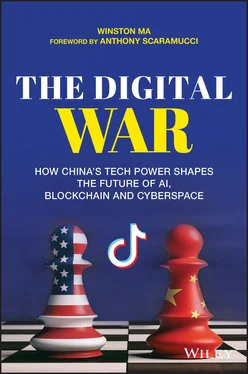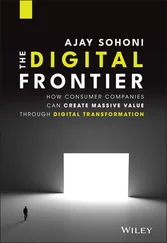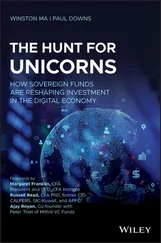For instance, Chinese shoe retailer Red Dragonfly– which closed almost all of its 4000 physical stores due to the coronavirus pandemic—has leveraged video streaming platforms to move its operations online. The store clerks are trained to run regular live streams to reach, virtually, shoppers still wary of confined spaces and to answer customers' queries online much as they would deal with in-store visitors. Foreign brands too have joined in the scramble to engage homebound Chinese consumers. Luxury product maker Louis Vuittonhosted a live-streaming sale in March 2020—the first time since the brand entered the Chinese market 30 years ago. Global automakers such as BMWhave hired professional livestream hosts to introduce their various car models.
For every business sector, the transition from an industrial economy that favored mass production and scale (which is “product driven”) to a digital economy that favors user connectivity, data, and their personal preferences (which is “user driven”) is challenging the very nature of the “core competence” long held by the sector and its leading companies. What's promising is that the tremendous revolution in e-commerce and retailing could be similarly applied to other industries when they embrace the digital transformation:
Responsive to market demands. New applications are driven by the needs of the market, aiming to solve the “pain points” of existing services and practices.
Keeping agile for new product development. Companies adapt their offerings quickly based on the “local needs” of Chinese consumers.
Deep integration of online to offline businesses. Online experience is not enough (a shocking concept after many years of mobile e-commerce boom) and must be complemented with offline services.
Emphasize a platform instead of single product offering or a specific vertical business. An ecosystem offering multiple connected products and services is more resilient.
For example, the Chinese insurance market is witnessing a remarkable pace of innovation, which started with the basic “internet +” before undergoing a shakeup of the industry. The insurance companies have moved through four phases in their digital evolution (see Figure 1.8), resulting in more direct engagement with customers and more tailored products for them. Furthermore, smart technologies are now revolutionizing the core operations of insurers, such as damage assessment for car accidents. The four phases are as follows:

Figure 1.8 From “Internet +” to data-driven digital economy
The first phaseinvolves setting up online channels to reach both customers and insurance agents and automating back-end processes, including underwriting and claim processing. The second phaseinvolves creating digital services to help customers with related offline activities, such as making a doctor's appointment through a mobile app. Through the first two steps, companies increase the number of customer interactions and strengthen their connection to customers. The third phasethen involves consolidating customers' online and offline data to provide more personalized solutions based on the improved understanding of customers.
The rewards are significant for issuers with successful digital implementations. Not only can they engage directly with customers to provide seamless interactions on products and services, but also gain access to comprehensive customer profiling information to win in long-term competitions on customization. According to Tencent's statistics in 2018, the online insurance purchase in China had an 18-fold increase in the past five years, covering a total number of 220 million insurers.
The fourth and latest phaseis the most exciting, which involves using smart technology and data analytics to revolutionize the core insurance business. For example, AI has been successfully put into vehicle insurance. Alibaba's financial arm, Ant Group, has developed Ding Sun Bao (Damage Assessment Tool), which aims to standardize damage assessment and make it more objective, reducing the potential for human adjusters on the scene to be influenced by the drivers involved. This digital tool is already adopted by large insurers, including China Taiping, China Continent Insurance, Sunshine Insurance Group, and AXA Tianping.
Ding Sun Bao can remotely collect photos of external vehicle damage, analyze them using AI-driven, deep-learning image recognition technology, reconstruct the scene of the accident, and assess the damage. One advantage is it makes damage assessment more objective, reducing the risk that claim handlers on the scene could be influenced by drivers involved in an accident; hence, there is a higher degree of accuracy in damage assessment. Another advantage is that through machine learning, it can process claims within a few seconds, much faster than human adjusters alone could handle.
At the first launch of DingSunBao in June 2017, Ant Group set up a challenge between “six experienced human claims adjusters” and its AI program. Each team evaluated 12 cases, during which DingSunBao took six seconds to assess the damage and set claim amounts, whereas human adjusters took 6 minutes and 48 seconds to reach their conclusions. Both judged that one of the 12 cases required further investigation. In May 2018, Ant Group launched version 2.0 of its DingSunBao app, which was upgraded into a video-based AI application.
With the upgraded version, car owners can use their smartphones to capture video clips of their cars for submission. Vehicle damage information is displayed automatically, including where and how to repair the vehicle and how much the car owner can claim from insurers, saving time in filing claims and offering transparency on what's likely to be covered. According to Alibaba, this new version's secret sauce includes 46 patented technologies, such as simultaneous localization and mapping, a mobile deep-learning model, damage detection with video streaming, a result display with augmented reality, and others. More industry transformation is coming as Ant Group is now using blockchain technology as the new infrastructure of insurance claims processing.
In 2020, the COVID-19 outbreak gave a digital transformation lesson to almost every industry. From a technology perspective, the outbreak has given a push to many new technologies such as drones and robots, as authorities seek to better detect and respond to the disease. Autonomous robots have replaced human cleaners at segregated wards. In rural areas, local authorities are using drones equipped with loudspeakers to alert citizens seen in open areas without face masks. In particular, it accelerates Chinese companies' shift to the cloud as enterprises try out cloud initiatives to facilitate remote working and remote interactions. For companies managing their internet infrastructures, making adjustments to computing needs on the fly is expensive and complicated. Cloud computing makes it easier.
On the other hand, many pandemic-driven new business practices will remain part of daily life. For example, live-streaming is now an important shopping channel, with or without the “home stay” order, and the digital platforms are developing enhanced services for livestream hosts with new digital technologies, such as 5G and AR- (Augmented Reality-) powered features. With a strong sense of urgency, all companies are rushing to learn how new 5G iABCD digital technologies can be integrated into their businesses to unlock value from nontraditional angles. The digital transformation of China is accelerating.
Читать дальше













